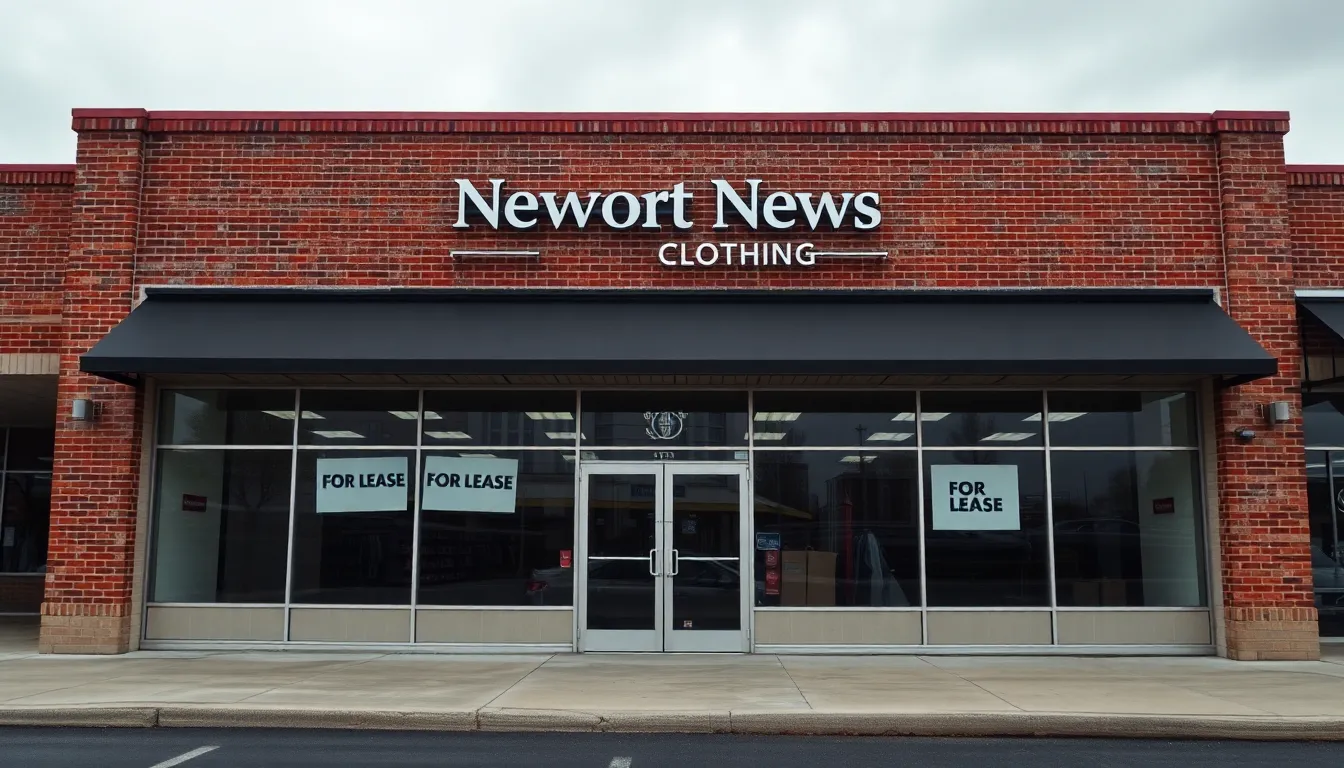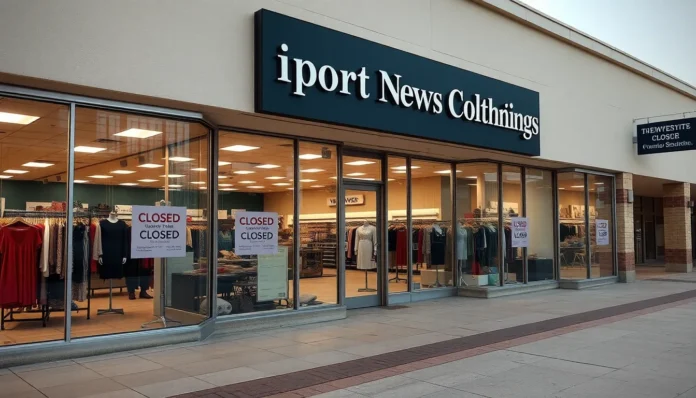Newport News Clothing, once a staple in the fashion industry, has officially closed its doors, leaving a significant mark on the retail landscape. Known for its affordable and stylish women’s apparel, the brand thrived for decades, catering to a diverse clientele. However, shifting consumer preferences and the rise of e-commerce have posed challenges that ultimately led to its downfall.
As shoppers increasingly turn to online platforms for their fashion needs, traditional retailers like Newport News struggled to adapt. This article explores the factors contributing to the brand’s closure, the impact on its loyal customers, and what this means for the future of similar retailers. The story of Newport News serves as a cautionary tale in an ever-evolving market.
Newport News Clothing Out of Business
Newport News Clothing emerged in the 1960s, targeting budget-conscious women seeking stylish apparel. The brand built its reputation on offering an extensive range of affordable dresses, blouses, and accessories. Success grew during the 1980s and 1990s when it gained prominence through catalogs and later online sales.
Newport News Clothing faced challenges as consumer preferences shifted towards fast fashion, emphasizing speed and variety over traditional retail. The brand struggled to adapt to the growing dominance of e-commerce, with competitors effectively leveraging online platforms.
Financial instability became apparent in the early 2000s, resulting in multiple ownership changes. Despite efforts to revitalize the brand, sales continued to decline, exacerbated by an inability to connect with younger consumers.
Recent trends in the fashion industry further complicated matters. Increased emphasis on sustainability and ethical production practices disconnected Newport News from evolving buyer values. Ultimately, the combination of market misalignment and operational challenges led to the brand’s closure, impacting its loyal customer base and serving as a warning to similar retailers navigating the changing landscape.
Reasons for Closure

Newport News Clothing faced several challenges that ultimately led to its closure. Financial difficulties and intense market competition played significant roles in its downfall.
Financial Challenges
Financial instability became apparent as sales declined sharply in the 2000s. Revenue losses culminated in reduced investment opportunities for marketing and product development. Debt levels rose without matching sales growth, straining resources. Multiple ownership changes failed to stabilize finances, leading to bankruptcy filings. Inadequate cash flow and inventory mismanagement exacerbated the situation, preventing effective pivoting to consumer demands.
Market Competition
Market competition intensified with the rise of fast fashion brands like Zara and H&M, which offered trendy styles at affordable prices. E-commerce growth disrupted traditional retail, shifting consumer shopping habits towards online platforms. Newport News struggled to establish a robust online presence, losing appeal among younger consumers who preferred shopping convenience. Competitors with agile supply chains rapidly adapted to fashion trends, outpacing Newport News in attracting budget-conscious shoppers. As a result, the brand fell further behind in a rapidly evolving retail landscape.
Impact on Employees
The closure of Newport News Clothing significantly affected its employees. Job loss emerged as the most immediate consequence for the staff, as many faced unexpected unemployment. Reports indicated that hundreds of employees across various locations experienced layoffs.
Financial instability created stress among employees, as many depended on their positions to support families and pay bills. A lack of severance packages or job placement assistance exacerbated their challenges, leaving many unprepared for the transition.
Emotional impacts also surfaced, with former employees expressing feelings of disappointment and uncertainty about their careers. The company’s long history added an emotional dimension, as many workers had spent years, if not decades, with the brand.
Regional economies felt the effects of the closure as well, with local businesses relying on Newport News for patronage. Consequently, job losses extended beyond the employees of Newport News, impacting local retailers and service providers.
Support from labor organizations and community groups emerged to assist affected workers. These entities provided resources for job training, networking events, and counseling services. Such support aimed to guide former employees toward new employment opportunities in a shifting job market.
Overall, the closure of Newport News Clothing not only impacted the employees directly involved but also reverberated through local communities, illustrating the broader implications of corporate downfall in the retail sector.
Customer Reactions
Customer reactions to the closure of Newport News Clothing reflect a mix of nostalgia and concern for the future of women’s apparel options. Many long-time customers express disappointment over the brand’s departure from the market.
Nostalgia for the Brand
Customers often recall the brand’s unique offerings that catered to budget-conscious women. They cherish memories of flipping through catalogs in the 1980s and 1990s, discovering stylish and affordable clothing. Social media posts reveal sentimental connections, with many sharing photos of outfits purchased years ago. Nostalgia resonates deeply as customers lament the loss of a brand that once filled a significant niche in women’s fashion.
Current Alternatives
Customers now seek alternatives to Newport News Clothing that provide similar affordability and style. Popular options include brands like H&M and Zara, known for their trendy, budget-friendly clothing. Retailers such as ASOS and Forever 21 also attract previous Newport News shoppers by offering diverse collections online. In addition, sustainable brands like Everlane and Reformation appeal to consumers looking for ethical choices in women’s apparel. While customers adapt to the changing market landscape, they continue to seek brands that balance affordability with style.
The Legacy of Newport News Clothing
Newport News Clothing holds a significant place in the history of affordable fashion for women. Founded in the 1960s, the brand initially catered to budget-conscious women, growing in visibility during the 1980s and 1990s through catalog sales that later transitioned to online platforms. Customers appreciated the accessible styles that paired affordability with trend-conscious designs.
The brand’s legacy includes a connection to generations of women who relied on its offerings for everyday clothing needs. While Newport News provided practical clothing options, it also embodied a distinctive sense of style that resonated with many. The brand thrived during a time when quality and affordability were paramount, garnering loyal customers who often shared fond memories of shopping from catalogs that delivered fashion directly to their homes.
As the retail landscape evolved, Newport News struggled to regain its footing amidst fierce competition from fast fashion retailers. The emergence of companies like Zara and H&M reshaped consumer expectations, emphasizing quick turnaround times and a constant influx of trendy options. Newport News’s inability to adapt to these shifting trends contributed significantly to its decline, as the brand lacked the agility to innovate and refresh its offerings over the years.
Newport News’s closure impacted its former employees deeply. Hundreds faced job losses, with many enduring financial hardships and emotional distress. The absence of severance packages and job placement assistance heightened the challenges for displaced workers. In response to these hardships, labor organizations and community groups provided vital support, facilitating access to job training and counseling services.
Customers’ responses to the brand’s closure span a spectrum of nostalgia and concern. Long-time patrons express disappointment over the loss of a brand that provided both style and affordability. As they seek alternatives, they increasingly turn to brands like ASOS and Forever 21 for similar offerings, while also exploring sustainable options. Newport News Clothing’s legacy remains, providing valuable lessons on the evolving dynamics of the retail sector and the critical need for adaptation in meeting consumer demands.
Conclusion
The closure of Newport News Clothing marks a significant shift in the retail landscape. Once a staple for budget-conscious women, the brand’s inability to adapt to changing consumer preferences and fierce competition ultimately led to its downfall.
The impact of this closure extends beyond just the loss of a brand. It affects hundreds of employees facing job insecurity and local economies that relied on its patronage. As former customers seek new options, the legacy of Newport News Clothing will linger, reminding consumers of the importance of innovation in the fast-paced fashion industry.
For those affected, the journey toward new opportunities begins now, highlighting the resilience of individuals and communities in the face of change.


